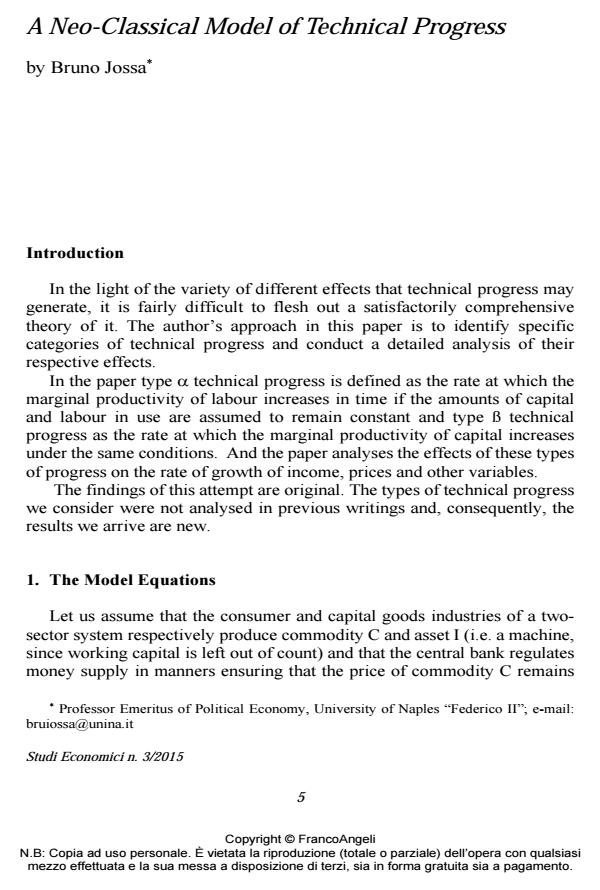A Neo-Classical Model of Technical Progress
Journal title STUDI ECONOMICI
Author/s Bruno Jossa
Publishing Year 2016 Issue 2015/117
Language English Pages 10 P. 5-14 File size 215 KB
DOI 10.3280/STE2015-117001
DOI is like a bar code for intellectual property: to have more infomation
click here
Below, you can see the article first page
If you want to buy this article in PDF format, you can do it, following the instructions to buy download credits

FrancoAngeli is member of Publishers International Linking Association, Inc (PILA), a not-for-profit association which run the CrossRef service enabling links to and from online scholarly content.
In the light of the variety of different effects that technical progress may generate, it is fairly difficult to flesh out a satisfactorily comprehensive theory of it. The author’s approach in this paper is to identify specific categories of technical progress and conduct a detailed analysis of their respective effects.
Keywords: Technical progress, growth
Jel codes: E, O3, O4
Bruno Jossa, A Neo-Classical Model of Technical Progress in "STUDI ECONOMICI " 117/2015, pp 5-14, DOI: 10.3280/STE2015-117001